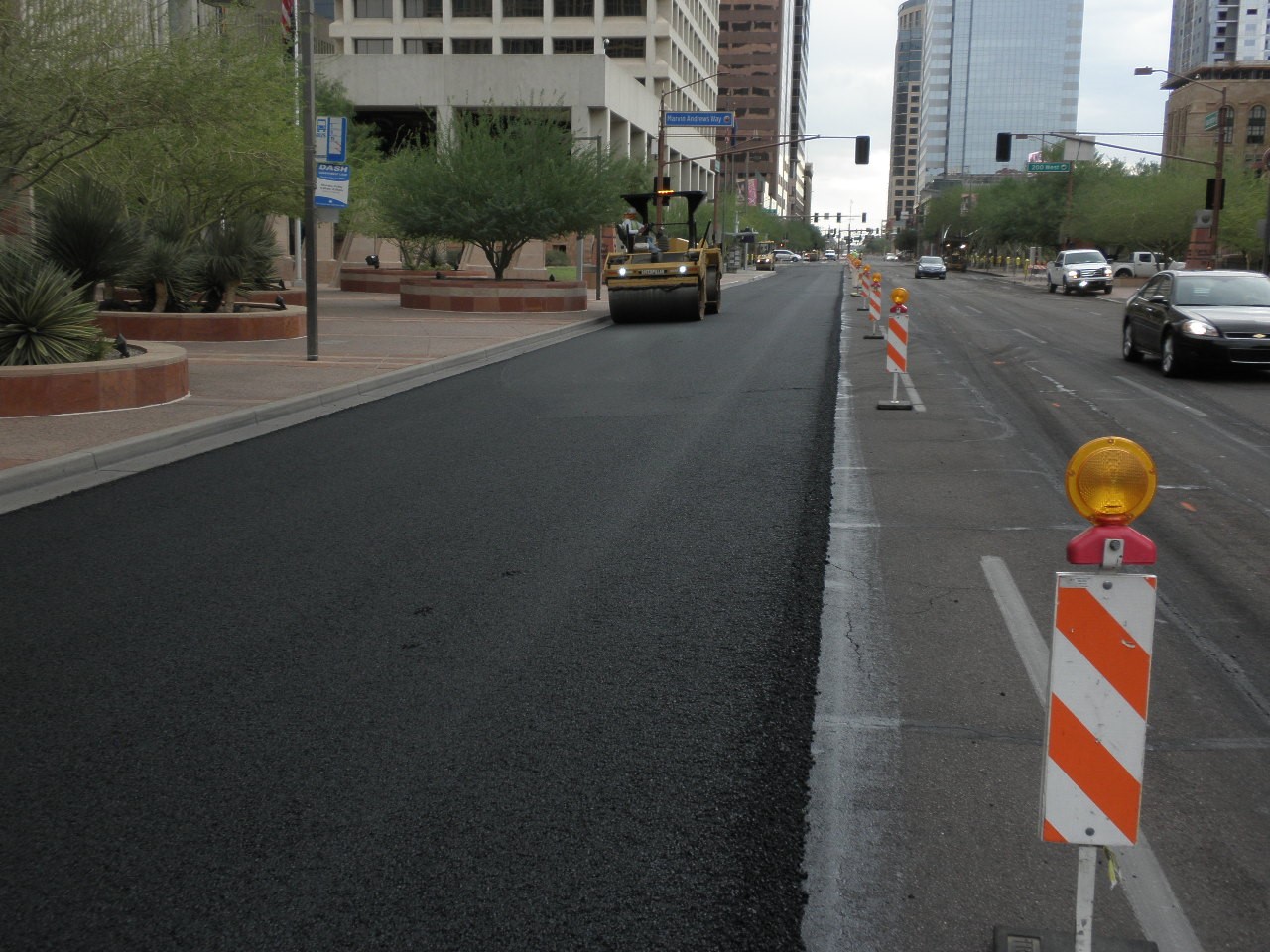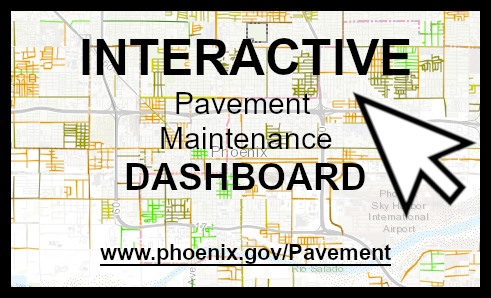 Phoenix has a comprehensive
roadway network of more than 4,850 miles of public streets. The Street Transportation Department Street Maintenance division is responsible for the planning, programming and execution of the city’s street maintenance program. This involves maintaining all roadways within the city’s jurisdiction limits and does not include private streets, state routes maintained by ADOT and roads maintained by Maricopa County.
Phoenix has a comprehensive
roadway network of more than 4,850 miles of public streets. The Street Transportation Department Street Maintenance division is responsible for the planning, programming and execution of the city’s street maintenance program. This involves maintaining all roadways within the city’s jurisdiction limits and does not include private streets, state routes maintained by ADOT and roads maintained by Maricopa County.
Starting in early spring and continuing through the fall, the Street Maintenance Division performs annual routine street maintenance activities to keep the city’s street network in a state of good repair and extend its lifespan. The work to repair and improve our roadways ranges from pothole patching to the longer term and most expensive projects like resurfacing and reconstruction.
Enhancing the safety of the roadway and improving the ride comfort of the road surface provides a benefit to the traveling public.
Pavement Preservation Program Fact Sheet and Frequently Asked Questions (PDF)
Pavement Condition Report (PDF)
What streets will be paved next?
 View the Interactive Pavement Maintenance Dashboard to view both completed and planned pavement maintenance projects. The planned projects were identified and prioritized based on street condition assessment data, field evaluations and public input.
View the Interactive Pavement Maintenance Dashboard to view both completed and planned pavement maintenance projects. The planned projects were identified and prioritized based on street condition assessment data, field evaluations and public input.
Dashboard Instructions Video - English
Video de Instrucciones del Tablero - Español
MOBILE FRIENDLY DASHBOARD: The dashboard is best viewed on a large screen or desktop monitor. While not optimal on a smartphone, this mobile version is still fully functional on many phones/tables.
Español - Móvil Amigable
To share your input, email your comments to
pavement@phoenix.gov.
Accelerated Pavement Maintenance Program